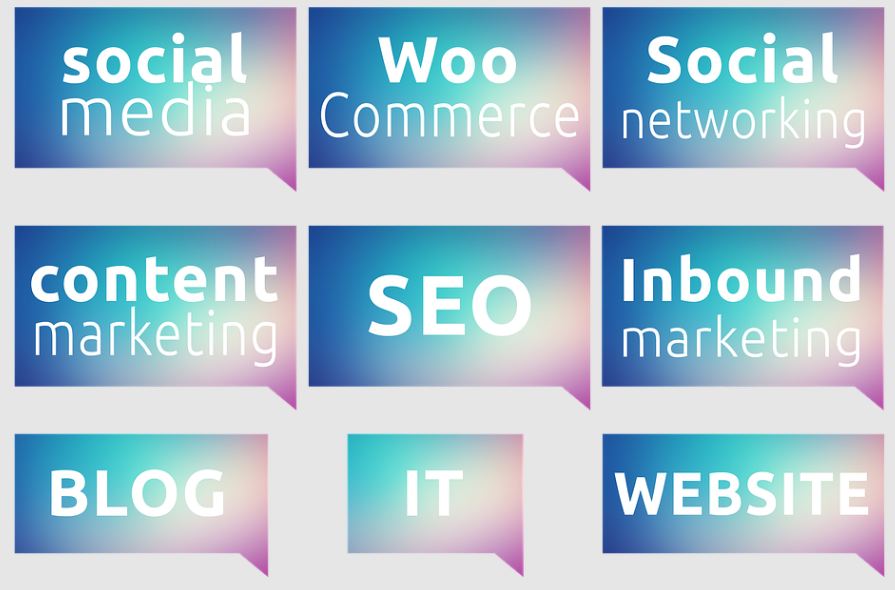If you ever have been responsible for producing and updating the business marketing strategy then you know that how easy it is to get overwhelmed by the advice and information. You think over the ideas of making an eye-catching poster or you want to talk to the potential customers at an industry event. On the other hand, you think of digital marketing strategies.
Fortunately, two universal marketing concepts such as inbound and outbound marketing can help to narrow your reach. These two marketing strategies are common and general strategies with different challenges, applications, and benefits. You can use it for your small business or large business depending on your needs.
Inbound Marketing vs. Outbound Marketing
There are several main differences between inbound and outbound marketing. Outbound marketing is about proactively reaching out to your targeted customers to get them interested in your product or service. On the other hand, inbound marketing focuses on creating and distributing the content that draws the attention of your targeted customers to your business or website.
Outbound marketing generally takes a more aggressive, and holistic approach with the hope that at least some people will be attracted to your business. Whereas, inbound marketing tends to aim to convince a particular group of people to purchase from you over time.
Difference between Inbound and Outbound Marketing
Inbound Marketing
- Informative digital content aimed at targeted customers or audiences. It is written to solve the problems of the customers.
- The content in inbound marketing comes in interactive forms. It can be social media posts, webinars, blogs, reports, etc.
- Messaging is for specific customers.
- Inbound marketing is measurable through digital marketing software.
- The global strategy in inbound marketing goes through multiple channels.
Outbound Marketing
- Non-digital content is designed for the marketing department to capture the attention of the customers. Also, it is written to sell the products.
- The marketing content of the brand is displayed in the ads, direct mails, TVs, billboards, etc. It is supposed to be passive.
- Outbound marketing is a linear strategy with limited channels.
- Messaging in outbound marketing needs to stand out from the millions of other advertisements that consumers see every day.
- It is difficult to measure the physical ad attribution in outbound marketing.
Inbound Marketing
Inbound marketing is all about attracting customers to your business. The best prospects are to look for products online. More than 60 percent of people tend to buy products online. They start their online shopping journey by looking for content, products, and services. They look for these things to solve their problems. Hence, your content should explain the usage and functionality of your products and services to solve the problems of the customers.
To do so, you can answer key questions in your niche industry to meet the needs of the customers. There are plenty of ways to do it such as guides, video content, blogging, etc. Each piece of content can serve as a way to differentiate the product and service from the competitor. You can use outstanding reviews, competitive pricing, amazing testimonials, and comparisons of your product in reports, social media posts, and podcasts.
Keep in mind that potential customers should get detailed content about your product and service in their shopping journey. For example, if a customer is looking for any product, he/she will search in the search engine. Let’s say they search for the best cellphone covers. The first organic content that will display on the search engine will let them understand the usage and functionalities of different types of cellphones covers. Hence, your brand’s name might be at the top.
Once they are satisfied with the problem-solving, they will go to your website and order a cellphone cover. This is how you attracted a customer to your business without being physically there for them. The customer read the reviews and all the detailed content. They visited your website and ordered the required product from your brand.
As a result, you got the business from your potential customer. Now he/she might recommend your brand to their family or friends and the loop goes on.
Benefits of Inbound Marketing
Several benefits of inbound marketing can help you determine if this is the right strategy for your business:
- Inbound marketing is not invasive. The potential customers can read your blog posts and buy a product from you.
- Inbound marketing content is education. It is designed specifically for each stage of the sales funnel.
- Inbound marketing is quantifiable. You can tie every part of the strategy to a metric that will be monitored over time.
- Make sure that your website and content are continually updated. Inbound marketing continues to attract qualified leads over time.
Challenges of Inbound Marketing
Inbound marketing cannot be the best solution for every company. Hence, it is having some downsides to focus on digital content:
- Inbound marketing requires ongoing maintenance to make sure that your content always meets the changing needs and wants of the customers.
- Inbound marketing requires a comprehensive strategy. It means that you need to purchase the tools that implement and integrate the campaigns across multiple channels.
- Inbound marketers are always working on developing and testing different content to drive the attention of the customer to their business.
Outbound Marketing
Outbound marketing sends a message to a lot of people hoping to make a sale. This marketing strategy is based on the idea that the larger group to which you send a message. The important thing in outbound marketing is feedback. It is often associated with traditional marketing such as radio, newspaper, cold calls, billboards, events, direct mail, etc. However, outbound marketing can be applied to modern technology such as pay-per-click advertisements or spam emails.
Most of the customers don’t research about the product being advertised. The potential customers who watch TV or browse a website and might get interrupted by an advertisement illustrating that why they should buy a certain product.
For example, a customer drives down the freeway and sees a billboard of a local furniture store. For a moment, they will think of investing in a new sofa but it stays in the mind. A few weeks later, they see an advertisement for the same local furniture on the TV but now they don’t remember that they were thinking to invest in a new sofa.
A few months later, they browse through their mailbox and find a coupon for the furniture store. At the same time, they got a bonus at work. Now they will be visiting your store to buy a new sofa. You see none of the ads referred to a sofa and they were not necessarily looking for it. On the other hand, the ads kept on drawing attention to a need that was not important at that time.
Benefits of Outbound Marketing
Outbound marketing is having few advantages that should not be overlooked.
- Outbound marketing promotes the awareness of the brand. It helps the business to reach the people who have never heard of their products or services before.
- Consumers are used to outbound marketing. They know that there will be ads in the Sunday newspaper or on TV. Hence, it makes it easier for them to trust the ads more than those presented with newer technology.
- Outbound marketing can produce immediate results. Potential customers interested in your products and services are more likely to act on your ad and purchase something from you.
Challenges of Outbound Marketing
Where there are benefits, there are challenges too. Outbound marketing can be a difficult task to achieve. Hence, there are some downsides to outbound marketing strategy.
- Outbound marketing is expensive. Buying a billboard, paying for ads on TV, going to trade shows, etc. all are expensive than digital marketing or inbound marketing.
- Measuring the effectiveness of certain outbound marketing strategies such as billboards is a big challenge for the business.
- It is easy for consumers to log out of outbound marketing. Many people turn off their TV during commercials or change the channel. Also, they throw away or recycle their spam.
- It is difficult to make outbound marketing attractive and relevant for everyone because it is more prevalent or general.
Typically, outbound marketing is all about sending a message on large scale, whereas, inbound marketing is for a specific purpose. The likelihood that some people will convert to outbound marketing strategy efforts but it is a high cost of ownership. Instead of shouting the business’ name or product on the rooftops and waiting for potential customers to respond, you can use inbound marketing. It will refine the relevant leads attracted to your business.
Inbound vs. Outbound Marketing – Interruption or Permission
Outbound marketing is interruption-based marketing because of TV ads, whereas, inbound marketing is permission-based because a potential customer has permitted the business to communicate with them. Inbound marketing is not as costly as outbound marketing. It is because, in inbound marketing, you have to make your website, content, and social media posts attractive for the customers. They are in a way that customer willingly purchases from your business.
On the other hand, outbound marketing triggers the idea in the potential customers but they don’t buy that product or service at an instance. It might take time but they will buy from you. Outbound marketing is like sending a general message to a large population without knowing their specific needs or wants. In inbound marketing, you refine the leads with specific needs and wants of the customers and you get the business from them.









